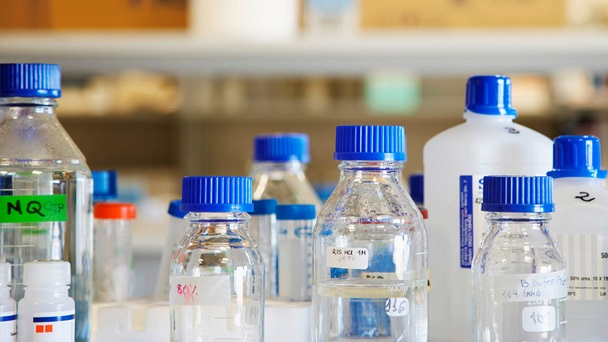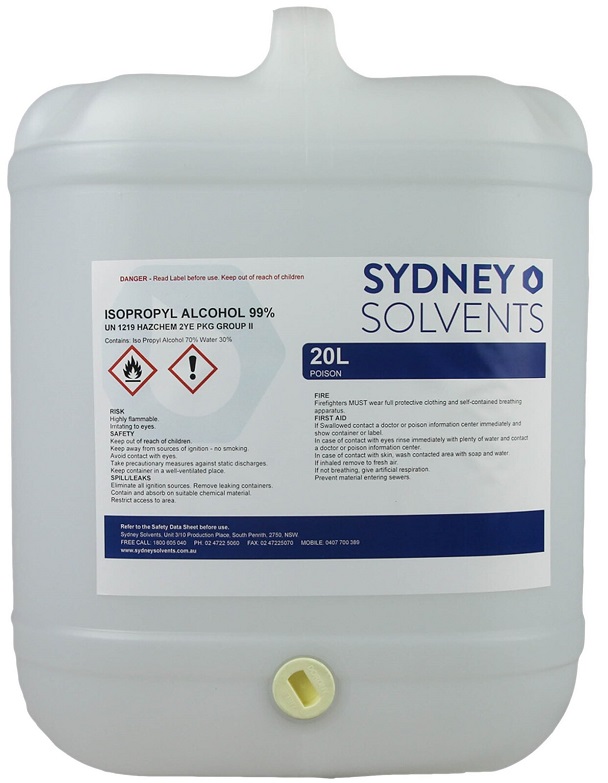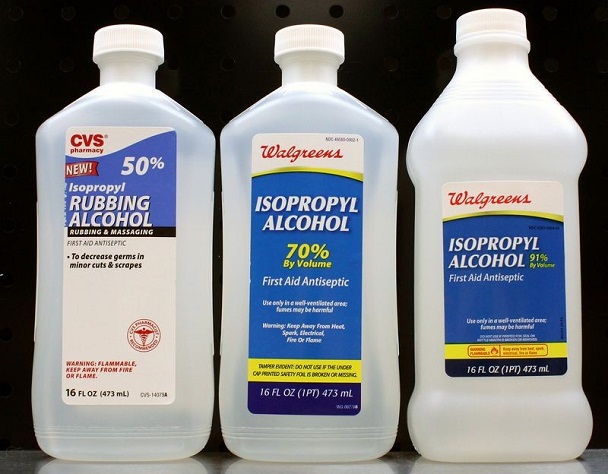All You Need to Know About IPA Solvents
Isopropyl alcohol, also known as IPA or isopropanol (2-propanol) is one of the most commonly used disinfectants in the pharmaceutical, hospital, medical device manufacturing, cleanrooms and electronics manufacturing industries. Different types of alcohol, concentrations, purity grades and solutions provide beneficial disinfectant and cleaning properties when used properly, or they can be straight out dangerous when used improperly. Here’s what you need to know before you buy isopropyl alcohol as a solvent and use it.

Contents
IPA Is a Great Solvent
Let’s start off by taking a look at the factors that impact isopropyl alcohol’s solvent capabilities. If you didn’t know, solvents have the ability to dissolve other substances by surrounding every molecule of the substances with solvent molecules. Isopropyl solvent is polar, which means it has both a negative and positive end of electrical charge due to the hydroxyl group present in IPA molecules. The electrically charged end of the IPA molecule attracts the soils that are made up of ions or molecules that are also electrically positive charged. However, organic molecules that make up hydrocarbon residues like oils, grease, etc. are non-polar and don’t have any negative or positive parts to be attracted to the IPA molecule. That being said, IPA doesn’t do much against organic substances. While you may successfully remove oil and grease from a surface using IPA, the force of the stream of the IPA will be what removes the residue away and not the IPA itself.
IPA Absorbs Moisture
IPA has this unique ability to absorb moisture from the air. This is due to the fact that it’s hygroscopic, which might be considered a disadvantage when it’s used as a solvent. It absorbs moisture very quickly until it reaches a ratio of about 35% water to 65% isopropyl alcohol. Surfaces cleaned with straight IPA take longer to dry. IPA itself dries very quickly, but the absorbed moisture takes more time. So if you’re using a trigger sprayer or squeeze bottle to apply IPA to a surface, every pump stroke will suck in moist air into the container, which will increase the amount of moisture sprayed onto the surface. As you keep cleaning, the drying time of the surface will increase as the absorbed moisture will need more time to dry out.

How to Store IPA?
Since IPA is hygroscopic, it needs to be stored in a way that restricts its exposure to moisture. For that reason, isopropyl solvent is typically bought in large bulk containers such as bottles, cans or drums. But for application purposes, it typically comes in metal or plastic containers that feature a piston pump sprayer. The best way to buy and store it is in aerosol containers that are capable of maintaining positive internal pressure that prevents the introduction of atmospheric air and water vapour into the container.
Purity and Quality of Different IPA Solvents
In many cases, affordable IPA products contain more water and even other contaminants such as oil. Avoid such products, as they can only worsen the cleaning problem. In other words, you get what you pay for. Lower cost means lower quality IPA. Using lower quality IPA that may have ionic contaminants as well can only add extra ionic contamination to the mix rather than remove it. These extra ionic salts can result in electrical discharges between the traces if they aren’t rinsed using a proper cleaning grade IPA. Over time, ionic contamination can result in corrosion, and if you’re cleaning electronics like circuit boards, it can damage it or ruin it completely.

What to Look for in IPA Solvent Products?
Look for a solution that contains between 90% and 60% alcohol and 10% and 40% purified water. IPA with this ratio is antimicrobial against fungi, viruses and bacteria. If the solvent you choose contains less than 50% alcohol, its disinfectant properties drop dramatically. Similarly, IPA with over 90% alcohol won’t improve the virucidal, fungicidal and bactericidal properties. Water is an important factor in killing or preventing the growth of pathogenic microorganisms. It acts as a catalyst and it helps denature the proteins of vegetative cell membranes. 70% of IPA products completely kill off microorganisms effectively. Having some water content inside the IPA solution slows evaporation, which in turn improves effectiveness by increasing surface contact time.
IPA solutions with over 91% alcohol content do kill bacteria, but they require longer contact times to completely disinfect a surface. This means that some spores can lie in a dormant state without dying. There are some disinfectants (chemical sterilants) that kill spores. Furthermore, IPA solutions with over 91% alcohol content produce more odour and vapour, which increase the risk of combustion and toxic fumes. When isopropyl alcohol comes in contact with oxygen, air and light, it can form unstable peroxides that can create explosions, especially if heated with aluminium. The volatility of IPA increases with alcohol concentration and storage time, especially if exposed to light for long time periods after opening.










